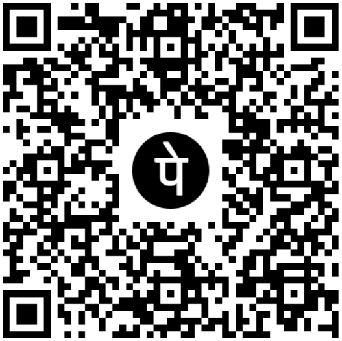Read more
From Ancient Games to Modern Play: The Fascinating Journey of Tic-Tac-Toe
Tic-tac-toe has intrigued and entertained players for centuries. Despite its simple rules, the game’s evolution reflects a fascinating journey through history, culture, and technology. This article delves into the origins of Tic-tac-toe, its development over the ages, and its place in modern play.
The Origins of Tic-Tac-Toe
Ancient Beginnings
The earliest known version of Tic-Tac-Toe can be traced back to ancient civilizations.
- Ancient Egypt: Around 1300 BCE, Egyptians played a game called "Terni Lapilli." This early variant was played on a grid similar to the modern Tic-Tac-Toe, using pebbles or other markers.
- Ancient Rome: The Romans also had a version called "terni lapilli." They used a grid and placed pebbles or markers to align three in a row.
These ancient games laid the groundwork for what would become Tic-Tac-Toe. Though the rules and gameplay might have differed, the core concept of aligning symbols in a row remained consistent.
Medieval and Renaissance Developments
By the medieval period, similar games were popular in Europe. The game evolved, and different regions developed their variations.
- Medieval Europe: The game continued to be played across different social classes, maintaining its appeal due to its simplicity and strategic elements.
- Renaissance Era: Tic-Tac-Toe became widely recognized in Europe. It was featured in various children's books and games, demonstrating its growing popularity.
The Evolution of Tic-Tac-Toe
The Birth of Modern Tic-Tac-Toe
The modern version of Tic-Tac-Toe began to take shape in the 19th century.
- 19th Century: The game’s rules were standardized, and it became widely known as Tic-Tac-Toe. The name "Tic-Tac-Toe" is believed to have originated from the sound made when the game is played: "tic-tac" is an onomatopoeic reference to the marking of the grid.
- Early 20th Century: Tic-Tac-Toe was incorporated into children’s toy sets and educational materials, solidifying its place as a popular game for all ages.
Digital Transformation
With the advent of computers and digital technology, Tic-Tac-Toe found a new platform.
- Early Computer Games: Tic-Tac-Toe was one of the first games to be programmed into early computer systems. Its simplicity made it an ideal candidate for demonstrating basic programming concepts.
- Modern Digital Play: Today, Tic-Tac-Toe is available on various digital platforms, including mobile apps and online games. It serves as both a nostalgic pastime and a tool for teaching programming and artificial intelligence.
Strategic Insights: Mastering Tic-Tac-Toe
Basic Strategies
Even though Tic-Tac-Toe seems straightforward, employing the right strategies can significantly impact the outcome.
- Control the Center: The center cell provides the most potential for creating winning lines. Occupying this space gives players the advantage of more opportunities.
- Take Corners: Corners are valuable positions that increase the chances of forming a winning line. They offer more potential for future moves.
- Block Opponent: Always monitor your opponent’s moves. If they are close to winning, block their opportunity to achieve three in a row.
Advanced Strategies
Advanced strategies involve deeper planning and foresight.
- Create Forks: A fork is a position where a player creates two potential winning lines simultaneously. This forces the opponent to block one, allowing the player to win with the other.
- Play for a Draw: If a win isn’t possible, focus on forcing a draw by blocking all of your opponent’s winning opportunities and ensuring every move prevents their victory.
Tic-Tac-Toe and Artificial Intelligence
Tic-Tac-Toe’s simplicity has made it a popular subject in the study of artificial intelligence (AI) and game theory.
Minimax Algorithm
The Minimax algorithm is used in Tic-Tac-Toe to determine the optimal move by evaluating potential outcomes. It’s a fundamental concept in AI that demonstrates how strategic decision-making can be modeled computationally.
Educational Value
Tic-Tac-Toe serves as an introductory tool for understanding algorithms and AI principles. Its simple structure makes it an ideal starting point for learning about more complex decision-making processes in artificial intelligence.
The Cultural Impact of Tic-Tac-Toe
In Popular Culture
Tic-Tac-Toe has permeated popular culture, appearing in various forms of media and entertainment.
- Toys and Games: The game has been featured in numerous toy sets and educational materials, reinforcing its status as a classic game.
- Media Appearances: Tic-Tac-Toe often appears in films, television shows, and literature as a symbol of simple strategy and childhood nostalgia.
Educational Tool
Beyond entertainment, Tic-Tac-Toe is used as an educational tool. It introduces concepts of strategy, logic, and planning, making it a valuable resource in both formal and informal learning environments.
Conclusion
Tic-Tac-Toe’s journey from ancient games to modern digital play reflects its enduring appeal and significance. Its evolution through history showcases its adaptability and relevance across different eras and technologies. Whether played on paper, a board, or a digital screen, Tic-Tac-Toe continues to captivate and challenge players of all ages.
From its ancient origins to its role in AI development and popular culture, Tic-Tac-Toe remains a timeless game with a rich history and a bright future. So, the next time you play Tic-Tac-Toe, remember that you’re participating in a game with a fascinating legacy and a place in the hearts of millions.





0 Reviews